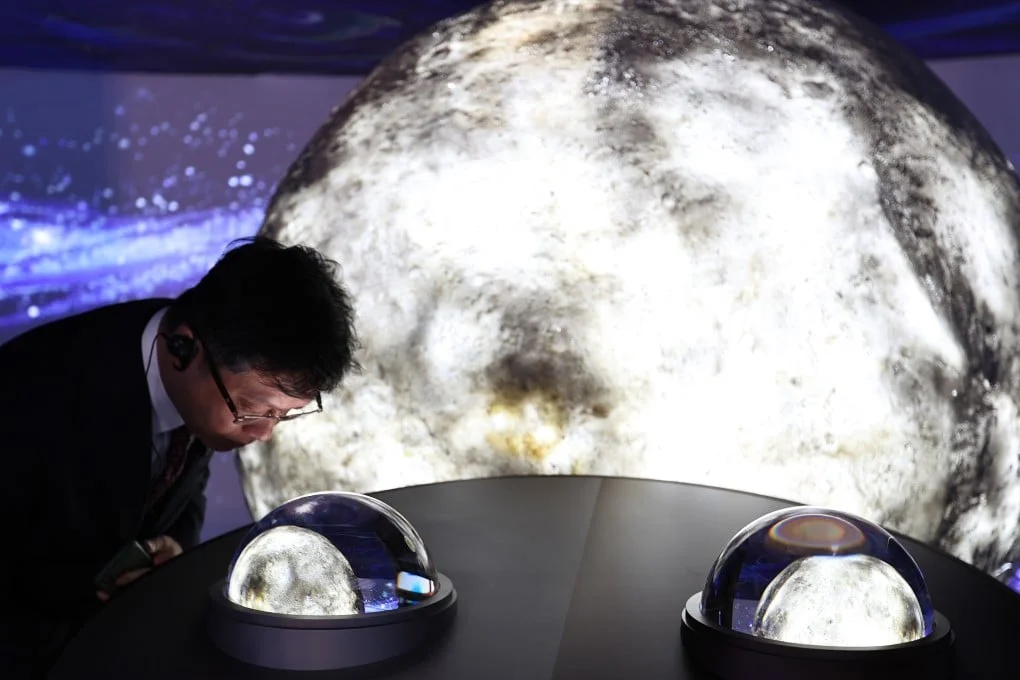
Race to the Moon: Scientists Worldwide Analyze Rare Lunar Samples from China’s Chang’e Missions
The world is once again captivated by lunar exploration as scientists around the globe gain access to precious samples from China's groundbreaking Chang'e-5 and Chang'e-6 missions. These missions, which successfully returned lunar samples to Earth for the first time in decades, have triggered a new wave of research aimed at understanding the Moon's formation, volcanic history, and its relationship to our own planet. But growing political tension is also impacting scientific collaborations, especially in the US.
Professor Mahesh Anand at the Open University in the UK, describes the Chinese lunar samples as "more precious than gold dust." He, along with a select group of international researchers, were granted access to the Chang'e-5 samples. His team's research efforts involve grinding and zapping the dust with lasers, hoping to uncover answers to vital questions. One particular focus is to find evidence supporting the theory that the Moon was formed from debris following a massive collision between Earth and a Mars-sized object billions of years ago.

Similarly, Professor Carsten Münker at the University of Cologne is among seven international researchers hand-picked for access to mission samples. His team aims to delve into details surrounding the Moon and how the lunar mantle formed. "Having access to such unique lunar samples will be a major step forward in better understanding the evolution and origin of the Moon," says Münker. He hopes to gain new insights, given the surprising discovery that the Chang'e-5 samples, retrieved from Mons Rümker, are only two billion years old – significantly younger than samples from the Apollo and Soviet Luna missions.
Back in the UK, meticulous work is underway to prepare and analyze the samples in ultra-clean facilities. Kay Knight, a technician with 36 years of experience, will be among the first to work directly with the grains. Sasha Verchovsky, another technician, utilizes a unique machine called Finesse, built by hand, to extract essential gases from the dust.

The enthusiasm for these samples is not limited to Europe. However, political hurdles are creating obstacles. Timothy Glotch, a planetary scientist at Stony Brook University, was also chosen by the China National Space Administration (CNSA) to receive Chang'e-5 specimens. He aimed to compare the Chinese sample characteristics to those gathered during the Apollo moon mission era. But unfortunately, due to the Wolf Amendment, which restricts NASA's cooperation with Chinese government entities, Glotch's project will not receive NASA funding. He expressed gratitude towards his establishment for offering funding to travel to China and work alongside his partner institutions.

China's Chang'e-6 mission has further expanded the available resources, returning nearly 2,000 grams of lunar soil from the far side of the Moon. This new material promises opportunities to explore the Moon's most ancient and least understood regions. China plans to organize another competitive selection process for scientists to access and study samples from the recently completed mission.
These international collaborations showcase the significant scientific potential of lunar sample analysis, despite external limitations. The data extracted can offer answers surrounding lunar formation and processes. Will these findings revolutionize our understanding of the Moon, and what might they reveal about our own planet's history? Leave your thoughts in the comments below.